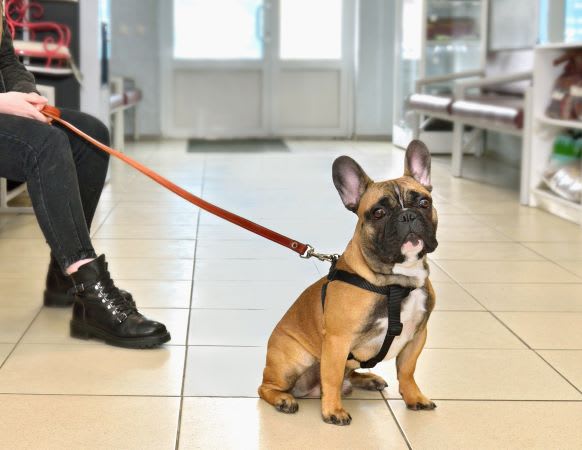
The average vet visit now costs $70-$174 for dogs and $53-$124 for cats nationwide, though routine checkups can range from $50-$350 depending on what services your pet needs, according to CareCredit. The AVMA notes that veterinary costs continue to rise in 2025 due to increased supply costs and operational expenses. Pet owners are feeling the financial impact this year.
"Over the past few years, all costs associated with running a veterinary practice have increased. Staffing costs and medical supply costs have truly skyrocketed as we compete with other less stressful, more lucrative careers," says Denise Petryk, DVM, Relief Veterinarian with experience in both emergency and general practice settings.
Whether you're exploring coverage from our best pet insurance companies or building an emergency fund, this comprehensive guide breaks down what drives veterinary pricing, typical costs by service type, and practical strategies to keep your pet healthy without breaking the bank.
Key Insights
- Routine vet visits cost $70-$124 nationwide, varying significantly by location and additional procedures.
- Veterinary inflation outpaces general CPI by 9.8%, driven by labor shortages and supply chain costs.
- Regional variations show California averaging $72 per visit versus Texas at $59.
- Emergency procedures can range from $800-$12,000 depending on treatment complexity.
- Pet insurance helps offset 70-90% of eligible expenses when major health issues arise.

Average Vet Visit Costs by Service Type
Understanding typical veterinary costs helps you prepare financially for your pet's healthcare needs. This table breaks down common services and their price ranges, so you can budget appropriately and avoid surprise bills. Your vet bills can range from affordable routine checkups to expensive emergency treatments, depending on what your pet needs.
"Some innovative practices are better utilizing veterinary technicians to perform tasks traditionally only done by the veterinarian, and these practices will offer lower-cost office visit prices," explains Dr. Petryk.
Visit Type | Dogs Cost Range | Cats Cost Range | Key Variables |
Routine check-up | $60 - $85 | $55 - $75 | Location, clinic type, additional services |
Vaccinations | $75 - $200 | $65 - $150 | Core vs. lifestyle vaccines, regional requirements |
Dental cleaning | $400 - $2,000 | $300 - $2,000 | Anesthesia, extractions, pre-surgical bloodwork |
Emergency visit | $150 - $5,000 | $125 - $5,000 | Time of day, diagnostic testing, treatment complexity, hospitalization |
Diagnostic testing | $200 - $800+ | $150 - $600+ | X-rays, bloodwork, ultrasound, biopsy requirements; CT or MRI |
Surgery (routine) | $500 - $2,500+ | $400 - $1,800+ | Spay/neuter to mass removal, anesthesia monitoring |
Chronic Disease Management | $100 - $400/month | $75 - $300/month | Allergies, diabetes, kidney disease, heart conditions |
Cancer Treatment | $3,000 - $15,000+ | $2,500 - $12,000+ | Surgery, chemotherapy, radiation, supportive care |
Costs vary significantly by geographic region, with urban areas typically 20-40% higher than rural locations.
To put emergency visit costs in perspective, Dr. Petryk shares a typical example: "Chocolate toxicity is a common emergency we see, especially around holidays. When dogs consume large quantities of dark chocolate, they require immediate emergency care costing $3,000 to $6,000 if not addressed before symptoms develop."
Common Pet Health Conditions and Their Costs
Beyond routine visits, common pet health issues can significantly impact your veterinary budget.
"The most expensive cases we routinely see fall into two categories: chronic conditions that weren't treated early, like severe skin allergies, and breed-related problems we almost expect to see, like knee ligament tears in overweight Labrador Retrievers," says Dr. Petryk.
Condition | Cost Range | Key Factors |
Ear infections | $50-$500 | Basic treatment vs. sedation/advanced care |
Skin allergies | $200-$2,500 annually | Environmental allergies, ongoing treatment |
Dental disease | $300-$2,000 | Cleaning vs. extractions, severity |
Broken bones | $1,500-$10,000 | Simple fracture vs. complex surgery |
Cancer treatment | $3,000-$15,000+ | Treatment type and protocol |
Diabetes management | $2,000-$5,000 annually | Insulin, monitoring, ongoing care |
Orthopedic injuries | $1,500-$10,000 | Injury complexity, surgical requirements |
Costs vary significantly by geographic region, with urban areas typically 20-40% higher than rural locations.
Ear Infections: $50-$500
Ear infections are common in dogs with floppy ears, like Basset Hounds and Cocker Spaniels. According to Spot Pet Insurance, basic treatment with wax-based antibiotic medications costs around $50, but total costs, including vet visits and diagnostics, typically range from $150-$250. Modern fear-free practices have improved care but increased costs significantly.
"Many pets need sedation, ear testing, thorough cleaning, and long-acting medications, bringing costs close to $500," explains Dr. Petryk. Severe cases requiring surgery can reach $2,000-$4,000, particularly when infections spread to the middle or inner ear.
Chronic Skin Conditions: $200-$2,500 Annually
For chronic skin conditions, costs have increased dramatically due to better treatments. "Bad skin is caused most often by environmental allergies, and the products we now have for helping are amazing but expensive.
"Years ago, we might have prescribed basic anti-itch steroids for $20, but now we have advanced treatments like specialized injections and medications that work much better for severe skin allergies. These newer treatments provide dramatically better results, but yearly costs can reach $2,500 or more for ongoing symptom control."
Dental Disease: $300-$2,000
Costs vary dramatically based on severity. Basic cleanings start around $300, but multiple extractions and advanced periodontal disease can push costs above $2,000. Regular at-home pet dental care helps prevent expensive procedures.
Broken Bones: $1,500-$10,000
Simple fractures may cost $1,500-$3,000, while complex breaks requiring specialized surgery and hardware can reach $10,000. Emergency cases and weekend injuries typically carry premium pricing.
Cancer Treatment: $3,000-$15,000+
Cancer treatment for pets varies widely based on cancer type and chosen protocol. Basic tumor removal starts around $3,000, while comprehensive treatment, including chemotherapy, radiation, and ongoing monitoring, can exceed $15,000.
Diabetes Management: $2,000-$5,000 Annually
Ongoing costs include insulin, regular blood glucose monitoring, special diets, and frequent veterinary checkups. Well-managed diabetic pets can live normal lifespans, but require consistent financial commitment.
Orthopedic Injuries: $1,500-$10,000
For orthopedic injuries, preparation is key. "Keep your active medium-sized to big dog lean and strong, or prepare for that knee ligament injury by saving up $10,000. In recent years, the cost of cruciate ligament repair with a tibial plateau leveling osteotomy (TPLO) has almost doubled as veterinary surgery specialists have faced increased costs."
Why Vet Visit Costs Are Rising So Quickly
According to the US Bureau of Labor Statistics, veterinary care costs are climbing much faster than general inflation—9.8% in 2024 compared to just 3.2% overall. Three main factors are driving these increases:
Higher staff wages: Practices must compete aggressively to hire and keep qualified veterinary technicians and support staff, with wages increasing 25% or more over the past 5-10 years.
Advanced equipment and treatments: Modern diagnostic tools and treatment options provide better care for pets, but require significant upfront investments that get passed on to pet owners.
Supply chain disruptions: Essential medications and equipment have seen 15-25% price increases due to ongoing supply issues affecting the entire healthcare industry.
Dr. Petryk explains: "Part of these costs are definitely related to better treatments, but on average, the veterinary technician administering a monthly injection is earning 25% more than they did 5 to 10 years ago. Add in all the other inflation-influenced costs of running a veterinary facility—from utilities to corporate profit margins."
What Influences Vet Visit Costs?
If you've noticed your vet bills climbing year after year, you're not alone. Understanding what's driving these price increases can help you better plan for your pet's healthcare costs and make informed decisions about their care. Three main factors are pushing veterinary expenses higher across the country.
Labor and Staffing Pressures
Your vet's office faces unprecedented staffing challenges, with support staff wages increasing dramatically to compete with less stressful, higher-paying careers. According to the AVMA, median salaries for veterinary hospital staff have risen significantly, with hospital administrators seeing 13% increases and practice managers experiencing 8% salary growth compared to just two years prior.
This fundamental shift means clinics must invest heavily in retaining qualified teams—costs that inevitably get passed to pet owners.
"In years gone by, support staff at the practice barely earned much above minimum wage. To practice the best medicine and provide excellent care, we need a stable team of employees, so average wages are now much higher," explains Dr. Petryk.
Supply Chain and Medical Equipment Costs
The medical supplies, pharmaceuticals, and diagnostic equipment your vet uses have all seen significant price increases. Advanced treatments that weren't available a decade ago now represent major operational investments that practices must recover through service fees.
"Veterinary clinics use extensive medical supplies, and inflation at every point of the supply chain gets passed along to pet owners," says Dr. Petryk. "Many supplies are foreign-sourced and subject to uncertain tariffs and supply disruptions. Since veterinary and human medicine often use identical products, supply issues dramatically influence pricing."
Modern diagnostic equipment represents another major cost increase. "A basic tonometer for measuring eye pressure used to cost about $100 and lasted for years. Today's advanced equipment can easily cost upwards of $1,500. These technological advances make diagnostic testing more expensive, and those costs are passed onto the pet owner."
Location and Clinic Type
Where you live dramatically affects what you'll pay, with urban areas typically charging 20-40% more than rural areas. Corporate-owned clinics often have different pricing structures compared to independent practices, reflecting varying operational models and overhead costs.
The ownership difference goes beyond just overhead. Corporate chains typically extract profits that independent veterinary owners would traditionally reinvest back into their clinic, staff, and local community. This fundamental difference in business philosophy can significantly impact pricing structures and overall costs.
"State-of-the-art, corporate-owned veterinary facilities are consistently the priciest, with routine examinations costing upwards of $80," notes Dr. Petryk. "In my Pacific Northwest region, costs vary widely depending on where you take your pet for care. We have several amazing practices in new buildings with outstanding equipment, but the quality of care might be as good or better in that smaller, older veterinary-owned clinic."
Average Total Pet Care & Vet Visit Spending
Understanding how vet visits fit into your overall pet budget helps you plan more effectively. According to the American Pet Products Association, the pet industry reached $152 billion in total expenditures in 2024, with 37% of pet owners expressing concerns about veterinary care access, primarily due to affordability issues.
Annual Pet Care Spending Breakdown
Dogs: $1,480 total ($387 veterinary, $1,093 other expenses).
Cats: $902 total ($217 veterinary, $685 other expenses).
Emergency fund recommendation: $1,000-$3,000 for unexpected procedures.
"Pets have moved from the backyard to family members sleeping on our pillows, which means they receive veterinary care much more frequently," observes Dr. Petryk. "We now have advanced diagnostic testing and treatments that weren't available before.
Dogs and cats are living longer, and caring for aged animals drives up lifetime costs—a thorough geriatric cat exam can cost $500, including bloodwork, urinalysis, thyroid testing, and blood pressure measurement."
How Pet Insurance Affects Vet Visit Costs
With vet bills climbing higher each year, more pet owners are turning to pet insurance to help manage costs. Insurance can cover 70-90% of major expenses and makes it easier to say 'yes' to pet preventive care when you're not worried about the full cost.
Pet Insurance Premium Averages
Dogs: $35-$70 monthly (comprehensive coverage)
Cats: $15-$35 monthly (comprehensive coverage)
Accident-only plans: $10-$25 monthly
"Making healthcare decisions for our pets is never simple, but not having to consider 80% of the cost makes decision-making significantly easier," explains Dr. Petryk. "Best medicine might mean full blood work, urinalysis, and follow-up visits. However, without insurance, a pet owner could face costs close to $800. Undoubtedly, insured pets see the veterinarian more often and receive more comprehensive care when they’re ill."
Pro tip: "If you're considering a very small or large purebred dog, research carefully and consider pet insurance early. The chance of higher-than-average lifetime costs is very real. Don't be surprised if your French Bulldog's vet bills exceed $8,000 in the first year, or your Labradoodle needs $10,000 in knee surgery," warns Dr. Petryk
Additional Money-Saving Options for Pet Care
Beyond insurance, several practical approaches can help you manage rising veterinary expenses without compromising your pet's health.
Preventive Care Plans and Wellness Programs
Many practices offer monthly payment plans ($25-$50), spreading routine costs throughout the year. Early detection through regular screenings prevents expensive emergency treatments.
"Pet wellness programs encourage pet owners to get comprehensive vaccine coverage. Preventing serious infections like leptospirosis can save thousands—diagnosing and treating this disease can cost upwards of $6,000," notes Dr. Petryk.
Generic Medications and Low-Cost Clinics
Generic medications are available for many conditions at 30-50% cost savings compared to brand-name products. Ask your veterinarian about generic alternatives for long-term medications like antibiotics, pain relievers, and chronic condition treatments. Many pharmacies also offer pet prescription programs with additional discounts.
Low-cost clinic options include:
Veterinary teaching hospitals: Student clinics supervised by experienced faculty offer comprehensive care at reduced prices.
Mobile vaccination clinics: Convenient, affordable immunizations at pet stores and community events.
Spay/neuter programs: Many communities offer subsidized sterilization services.
Rural veterinary practices: These often have lower overhead costs and more competitive pricing than urban clinics.
Pro tip: Before choosing a low-cost option, research the facility's reputation and ask about supervision levels to ensure quality care.
How to Budget for Vet Visits
Monthly pet budget: Allocate 2-4% of your monthly income for pet expenses, including emergency savings.
Emergency fund: Build savings of $1,000-$5,000 specifically for unexpected veterinary expenses.
Cost transparency: Request detailed estimates before procedures to avoid billing surprises.
Insurance comparison: Compare multiple providers while your pet is young and healthy for better rates.
Frequently Asked Questions
How much does a typical vet visit cost?
A standard vet exam averages $70–$124, with dogs ranging $70–$174 and cats $53–$124. Add-on services like vaccines or tests can bring the total to $200–$350. Urban clinics often cost 20–40% more, and emergency visits range from $150–$5,000+.
Does pet insurance reduce out-of-pocket vet visit fees?
Yes, pet insurance typically reimburses 70-90% of eligible expenses after meeting annual deductibles. However, pre-existing conditions are excluded, and most policies have waiting periods before coverage begins.
How much does a visit to the pet hospital cost?
Pet hospital visits, especially emergency visits, are significantly higher than routine checkups. Emergency consultation fees alone can range from $150–$500, with total costs often reaching $800–$5,000 depending on diagnostics, hospitalization, and treatments required. For severe emergencies such as surgery for bloat or poisoning, bills can exceed $10,000.
How much is reasonable to spend on vet bills?
Financial experts recommend budgeting $200–$400 annually for routine care and setting aside an emergency fund of $1,000–$5,000 for unexpected treatments. What’s “reasonable” depends on your pet’s age, breed, and health status—but allocating 2–4% of household income to pet care ensures most owners can handle both preventive care and unplanned expenses.
What factors make vet visits more expensive?
Your pet's age and breed, your geographic location, clinic type (emergency practices charge more), and treatment complexity all influence costs. After-hours and weekend visits typically cost 50–100% more than regular appointments.
How often should I take my pet to the vet to avoid costly treatments?
Annual wellness visits for healthy adult pets help detect problems early, when treatment is less expensive. Preventive care costs $200–$400 annually but can prevent thousands in emergency treatment expenses.
The Bottom Line: How Much Does a Vet Visit Cost?
Vet visits now cost $70-$124 on average, but with veterinary inflation running at 9.8% annually, these expenses will continue rising. Smart financial planning through emergency savings, insurance coverage, and preventive care helps ensure your pet receives excellent veterinary care without compromising your financial stability.
Taking care of your pet's health leads to more years together and a better quality of life. When you know what to expect and plan ahead, you can give your pet great care without financial stress.
Methodology
We know pet care advice is only helpful if it's accurate and realistic for your situation. That's why we've combined real veterinary expertise, official industry data, and current market pricing to ensure that every tip and cost estimate in this guide reflects what you'll experience as a pet owner.
Cost data sources: All veterinary cost estimates in this article are based on real-world practice experience from Denise Petryk, DVM, Relief Veterinarian with experience in both emergency and general practice settings. Cost ranges reflect typical pricing observed in her clinical practice and may vary by geographic location and specific veterinary facility.
Industry statistics: Pet care cost inflation data is sourced from the US Bureau of Labor Statistics and the American Pet Products Association, the industry's primary organizations tracking market data and consumer trends.
Verification process: All claims and recommendations in this article have been reviewed by our veterinary expert for accuracy and clinical relevance. Cost estimates are presented as ranges to account for regional variations and individual case complexity.
Transparency note: BestMoney.com is committed to providing accurate, unbiased information to help consumers make informed decisions about pet care expenses.

